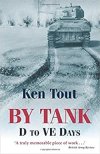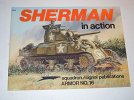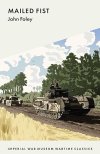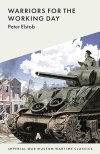- Joined
- Apr 28, 2018
- Messages
- 11,035
- Points
- 113
- First Name
- Jakko
That’s a much better kit, mostly because it has nothing in common with the 1980s one you’re buildingTamiya really did leave a lot of it out didn't they. I hope my Easy Eight kit is a bit more accurate.
 It has the exhaust deflector in full, and though it’s moulded a bit thick, it actually hinges up into the hull if you want to build it that way. The only real snag with the kit is that the bogies are a rather loose fit, unlike what I expected from Tamiya. See here for my take on it, though I didn’t quite build is straight from the box.
It has the exhaust deflector in full, and though it’s moulded a bit thick, it actually hinges up into the hull if you want to build it that way. The only real snag with the kit is that the bogies are a rather loose fit, unlike what I expected from Tamiya. See here for my take on it, though I didn’t quite build is straight from the box.I have a bit more respect for the old Sherman now. I may even have to buy a book or two, as I can definitely see me building more.
I looked in the instructions for your kit and the old one before writing that post, and noticed your kit doesn’t mention them at all, but I thought I’d point it out in case you’ve seen photos like these:You'll be pleased to know that C9 and C10 are still on the Sprues - I don't think the destructions called them up.
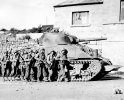
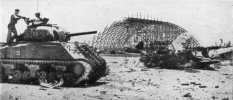
… and thought, “Those armour plates look nice, I’ll stick them on!”

The first photo, BTW, is of a “small-hatch” M4, with the steeper hull front, and those did get the extra armour plates (as you can tell). The second is a “large-hatch” M4A2, which looks almost indistinguishable from your M4A3 from this angle. The only reason you can tell at all that it’s an M4A2 from this particular photo is the fact that it has the extra armour plates


 sounds a bit unfair!
sounds a bit unfair!